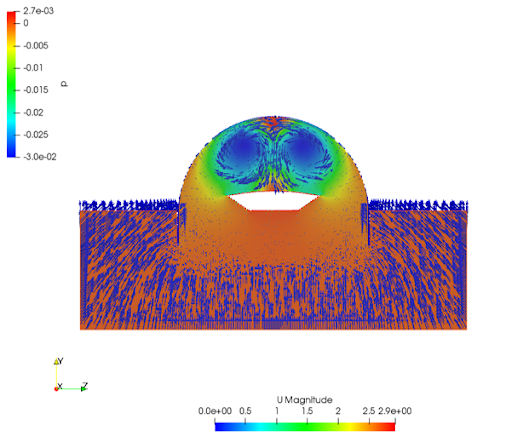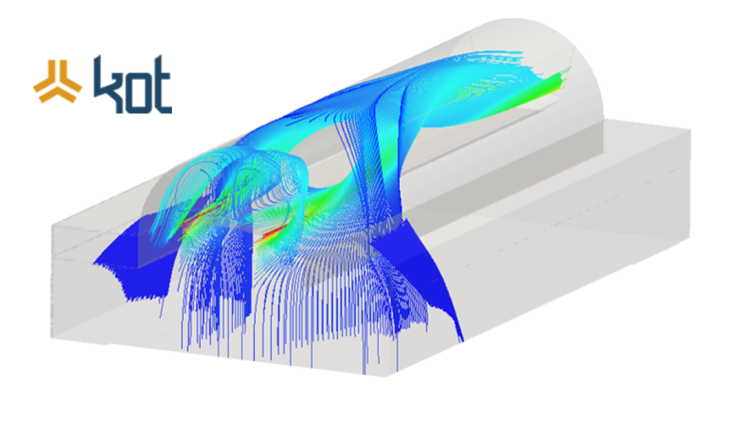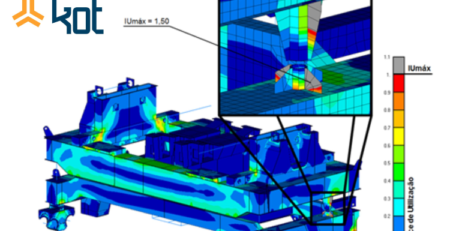Computacional Fluid Dynamics: the required physics and maths behind CFD
Computational fluid dynamics, the most common academic term, is also known for its acronym CFD. It enables approaching issues through numeric simulations applied to fluid outflow, heat transferring and other correlated phenomena. It is a field of engineering which is in constant development, as its applications and potential increase along with the evolution of the computational resources available.
To understand CFD simulation it is crucial to know, mainly, two great areas: numeric methods and thermo fluid-dynamics.
Numerical Methods
Are methods in which there is an algorithmic application to solve mathematical problems, such as: algebraic equations, systems of linear equations, interpolation and extrapolation, adjusting points on a curve, differential equations, etc.
Fluids Mechanics and Thermo Dynamics
Within the field of thermal sciences, the fluid’s mechanics is researched alongside thermodynamics and heat transferring. Focusing on the Fluid Mechanics, we can state that this field of knowledge studies the fluid’s behaviour in two distinctive categories:
- Fluid at rest, or fluid statics;
- Fluid in movement, or fluid dynamics.
Grounded on these categories, engineering has several industrial applications of high complexity for fluid mechanics, however, concomitantly, they often happen in a very straightforward manner on many people’s routine. For all movement, there is some sort of fluid, be it air, water or other more specific fluids. Here are some examples:
- Air flow for notebooks’ cooling;
- The air blown through an air conditioning system at an auditorium;
- Opening and closing of the hydraulic valves of apartments;
- People’s transportation through air, with aircrafts, and sea, through ships;
- Toilet flushing.
Even on the applications mentioned above, it is clear that the research of fluid mechanics is intrinsically linked to the thermodynamics and heat transferring disciplines. Using a refrigeration system as an example, the working fluid, also known as refrigerating, is used for transferring heat from a cooler region to a warmer one. Therefore, the CFD analyses embraces the application of all the thermo sciences in the research of fluids. To learn more about the field of thermodynamics, read this KOT article.
The mathematics behind CFD
As per usual, fluids obey the fundamental laws of physics in regards to mass conservation, amount of movement and energy. These laws lead to the continuity equations of energy and Navier-Stokes. Said trio is called Equation of Navier-Stokes, a group of equations composed by partial derivatives which describe the fluid’s behaviour. In simple flow, the Navier-Stokes equations can be reduced to others which allow for analytic solutions, ie., the fluid equations of Bernoulli.
However, most real engineering cases do not refer to simple flows. Therefore, within Computational Fluid Dynamic (CFD) complex geometries are replaced by thousands (even millions) of known elements and the systems of partial differential equations by a set of approximate algebraic equations.
For most software used in these simulations, the Finite Volumes Method is used. Thus, each cell can be seen as a small control volume in which discretized versions of the equations are solved. In other situations, bidimensional analyses can be more practical and efficient, using small areas like cells.
Simulations by CFD
Based on the aforementioned physical and mathematical knowledge, several software available at the moment can be used to achieve the desired results. It is possible to obtain speed, pressure, and temperature distribution of a fluid in a pipe; to analyze the air and hydrodynamics forces acting on a building; to quantify the heat loss by equipment in an industrial plant; amongst other applications.

More importantly than simulating the fluid behavior, it is essential to properly interpret the results. The CFD simulation can be used in numerous situations where experimentation can be infactible or when the cost for a scaled model is prohibitive. It is a simulation technique which requires the know-how to ensure the analyses will provide results with low computational costs.
KOT stands out in the national and international markets by offering high level technical engineering services to big enterprises.
Get in touch with KOT’s specialists team!

Rafael Brasil
Mechanical / Aeronautical Engineer from UFMG and post-graduated in Structural Engineering from the same university. He had the opportunity to work at the European Aeronautic Defense and Space Company (EADS), in Germany. He is currently Development Director at KOT Engenharia, leading dozens of projects related to the Structural Integrity of assets and equipments.
References:
[1] ÇENGEL, Yunus A.; CIMBALA, John M. Mecânica dos fluidos: fundamentos e aplicações. AMGH Editora, 2012.












Leave a Reply